This lecture was given by His Divine Grace Srila Gour Govinda Swami on Rama Navami 20 April, 1994 in Bhubaneswar.
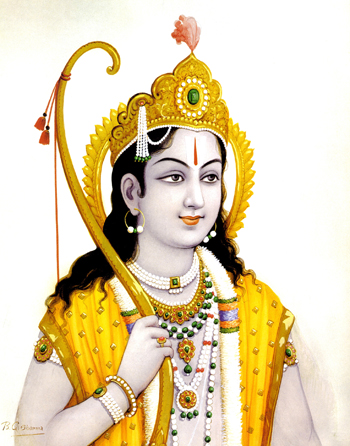
I will be speaking in two languages, Oriya and English, so I request one and all to sit patiently, silently, and hear the sweet nectarean topics of the Lord. This is very sweet and nectarean katha, and those who are devotees, they can relish it. Those who have developed some relish for hearing topics about the Lord cannot leave it. Rather they develop greed for it, how to get more and more and relish more and more.
So when there is a language difficulty I request you not to feel disgusted. That would be offensive. Krsna-katha, bhagavata-katha is not different from Bhagavan. Wherever that katha is going on, where the dear devotees are discussing krsna-katha, the Lord appears there. So if you feel disgusted and get up and go out then you will become an offender. Don’t become an offender. Therefore you should have patience.
Today is a most auspicious day, the appearance day of maryada-purusottama Bhagavan Rama. Rama is one of the incarnations of the Supreme Personality of Godhead, Krsna.
(Gurudeva sings Sri Dasavatara Stotra— Jayadeva Gosvami)
Innumerable Incarnations
avatara hy asankhyeya
hareh sattva-nidher dvijah
yathavidasinah kulyah
sarasah syuh sahasrasah
(Srimad-Bhagavatam 1.3.26)
In the 1st canto of Srimad-Bhagavatam, Sukadeva Gosvami says: “Lord Hari has innumerable incarnations. As innumerable outlets come out from a very big lake, similarly innumerable incarnations come from Lord Hari. Lord Hari or Krsna is the source of all incarnations.
ramadi-murtisu kala-niyamena tisthan
nanavataram akarod bhuvanesu kintu
krsnah svayam samabhavat paramah puman yo
govindam adi-purusam tam aham bhajami
Brahma-samhita (39) says: Rama, Nrsimha, Vamana, these are incarnations of the Supreme Lord Krsna. These incarnations are the portion, plenary portion and portion of the portion of the Lord. Portion of the portion is called kala, kala-niyamena. Bhagavata is also an incarnation of the Lord. Sukadeva Gosvami says, ete camsa-kalah pumsah krsnas tu bhagavan svayam (SB1.3.28)— all the avataras are kala, portiond of the portion is kala, and Krsna is svayam bhagavan, He is avatari.
Rama is one of the incarnations of Kåñëa. He is the portion of the portion, kala. So giving the example of the candle Brahma-samhita says, there is no difference between avatara and avatari. There is one original candle and many candles are coming out and lit up from that original candle, and every candle has the same dharma of giving light. So in that sense there is no difference between avatara and avatari. This is tattva. If one understands in tattva there will be no confusion. Otherwise if one cannot understand in tattva there will be confusion.
The Lord Reciprocates
Ananta-rupam anadim acyutam ananta-rupam—the Supreme Lord has unlimited forms, so there are devotees who want to see a particular form of the Lord. Those who are devotees of Lord Rama, they want to see the Rama form. Those who are the devotees of Lord Krsna, they want to see the Krsna form. And, bhakte ca utpatha rupaya bhagavan bhakta-vatsala, He is very dear to His devotees, bhakta-vatsala. According to the desire of the devotee the Lord reciprocates and shows him that form, and also, according to the will of the devotee, the Lord descends because He is bhakta-vatsala, He is very dear to His devotees.
Hanumanji is a Famous Dasya-Bhakta
Those who are rama-bhaktas, devotees of Rama, they want to see the Rama form. In this connection it is said that Hanumanji is a great and famous rama-bhakta, a dasya-bhakta, dasye kape pati. Hanumanji is a famous dasya-bhakta. Hanuman is still living in this material world, in Kimpurusa Varsa, engaged in chanting rama-nama. During the last Treta-yuga, when Lord Rama wound up His lélä and went back to His abode in the spiritual world, He took all the inhabitants of Ayodhya with Him, but He didn’t take Hanuman. He left Hanuman here, saying, “You stay here and teach dasya-bhakti.” So Hanuman is still here.
My Heart and Soul is the Lotus-Eyed Rama
Srila Sanatana Gosvami has mentioned in Brhat-Bhagavatamrta that once Lord Krsna sent Garuda to Hanuman, “Go and tell Hanuman that I want to see him. Tell him he must come.” So Garuda went and found Hanumanji engaged in chanting rama-nama. He told Hanuman, “I have come from Dvaraka, Lord Krsna has sent me. He wants to see you.” But Hanumanji didn’t pay any attention. Garuda repeatedly said, “I have come from Dvaraka, Lord Krsna has sent me. He wants to see you.” Hanuman got angry and gave a great lash with his tail. Garuda was forcefully thrown up in the air and fell down in Dvaraka in front of Krsna. Krsna understood what had happened still Krsna asked Garuda, “What did you tell Hanumanji?” Garuda said, “I told Hanuman that I had came from Dvaraka and that Krsna wants to see you.” “Why did you say Krsna? Go again and tell him that Lord Rama wants him to come. Unless you say Rama, he won’t hear you.” That is because Hanumanji is aikantikata, he has one-pointed devotion to Lord Rama. Hanumanji is a great sadhu so he knows tattva. He says,
srinathe janaki-nathe
cabhede paramatmani
tathapi mama sarvasvo
ramah kamala-locanah
(Sri Prema Bhakti-candrika (17) Narottama dasa Thakura)
“I know there is no difference between Srinatha and Janakinatha, the husband of Sri, Laksmiji, and the husband of Janaki, Sitadevi. There is no difference, both are param-atma, param-brahma, but my heart and soul is the lotus-eyed Rama, not Srinatha, not Krsna.”
Again Garuda went and requested Hanumanji, “Lord Rama wants to see you.” “Why didn’t you tell me Lord Rama is calling? My Lord has called me so I must go.” Garuda said, “Hanumanji, come and sit on my shoulder, I will fly you there.” Hanuman said, “No, I don’t need you, I am going.” Hanuman had already reached Dvaraka before Garuda. Then Garuda saw that Krsna had assumed the form of Rama, that Balarama had assumed the form of Laksmana and that Rukmini had assumed the form of Sitadevi. She was standing and Hanuman, with folded hands, was sitting before them.
The Lord manifests the form the devotee wants to see. So Caitanya Mahaprabhu showed sad-bhuja, His six-handed form, to Sarvabhauma Bhattacarya. In the first two hands He is holding a bow and arrow, signifying Rama. In the next two hands He is holding a flute, that is Kåñëa. In the last two hands He is holding a water pot and a danda. Holding a danda signifies sannyasa, meaning He is Rama as well as Krsna.
Murari Gupta is Hanuman
In gaura-lila, Murari Gupta is Hanuman. So those who are devotees of Lord Rama are also with Gauranga. Only Gauranga Mahaprabhu gives prema. Unless you come to the fold of Gaura you cannot get prema. Therefore many devotees of Lord Rama are also under the fold of Gauranga, because He is the most dear servant, däsa. Hanumanji is also there in Murari Gupta.
Rama-Bhaktas Started Chanting Krsna-Nama
After accepting sannyasa Mahaprabhu travelled and preached in Southern and Northern India for six years. While traveling in South India He met many rama-bhaktas and converted them into krsna-bhaktas; many rama-bhaktas started chanting krsna-nama. In Caitanya-caritamrta, Madhya-lila 9.12, you will find this verse:
sei saba vaisnava mahaprabhura darsane
krsna-upasaka haila, laya krsna-name
All the Vaisnavas, seeing Mahaprabhu and getting His mercy became worshippers of Krsna and so they started chanting krsna-nama. As Mahaprabhu was travelling on the road He was chanting the following mantra:
rama raghava rama raghava rama raghava pahi mam
krsna krsna krsna krsna krsna krsna krsna he
krsna krsna krsna krsna krsna krsna krsna he
krsna krsna krsna krsna krsna krsna raksa mam
krsna krsna krsna krsna krsna krsna pahi mam
rama raghava rama raghava rama raghava raksa mam
krsna kesava krsna kesava krsna kesava pahi mam
ramadasa mahadeve karila darasana
ahovala-nrsimhere karila gamana
(Caitanya-caritamrta, Madhya 9.16)
There he saw Lord Mahadeva [Siva], the servant of Lord Rama. He then went to Ahovala-nrsimha.
nrsimha dekhiya tanre kaila nati-stuti
siddhavata gela yahan murti sitapati
(Caitanya-caritamrta, Madhya 9.17)
Upon seeing the Ahovala-nrsimha Deity, Caitanya Mahaprabhu offered many prayers unto the Lord. He then went to Siddhavata, where He saw the Deity of Ramacandra, the Lord of Sitadevi.
raghunatha dekhi’ kaila pranati stavana
tahan eka vipra prabhura kaila nimantraëa
(Caitanya-caritamrta, Madhya 9.18)
Upon seeing the Deity of Lord Ramacandra, the descendant of King Raghu, the Lord offered His prayers and obeisances. Then a brahmana invited the Lord to take lunch.
Upon seeing the vigraha of Rama-Sita the Lord offered His prayers and obeisances. In Siddhavata He saw a rama-bhakta, a dear devotee of Rama, a Vaisnava. That rama-bhakta invited Mahaprabhu to his home to give him food, bhiksa. So Mahaprabhu, accepting the invitation, went and stayed in his house. sei vipra rama-nama nirantara laya [CcM 9.19] —that vipra was always chanting rama-nama: ‘Rama, Rama, Rama, Rama’. Mahaprabhu stayed in that vipra’s house, accepted bhiksa and showered His mercy on him. Then Mahaprabhu left his house and proceeded on His way. Then Mahaprabhu came to Skanda-ksetra and took the darsana of Skanda, that means, Kartikeya. Mahaprabhu then came to Trimatha where He had the darsana of Vamana vigraha. When Mahaprabhu returned to Siddhavata and visited that vipra, the rama-bhakta, Mahaprabhu saw that now that vipra was chanting krsna-nama, instead of rama-nama. Mahaprabhu asked him:
tumi purve nirantara laite rama-nama
ebe kene nirantara lao krsna-nama
(Caitanya-caritamrta,Madhya 9.24)
“When I visited you previously you were chanting rama-nama. Why are you chanting krsna-nama now?” The brahmana said, “From the day I first saw You my tongue began uttering krsna-nama. From my childhood I was chanting rama-nama, that was my nature, but that is now changed by seeing You. Now my tongue is chanting krsna-nama.”
The Potency of krsna-Nama
toma dekhi’ gela mora ajanma svabhave
sei haite krsna-nama jihvate vasila
krsna-nama sphure, rama-nama dure gela
“From childhood I have studied sastra, I know the tattva of the words Rama and Krsna from sastra.” He also explained their verbal roots. In the Padma–Purana there is the rama-sata-nama-stotra, the one hundred names of Lord Rama.
Quoting the Padma-Purana he said:
ramante yogino ‘nante
satyanande cid-atmani
iti rama-padenasau
param brahmabhidhiyate
“‘The Supreme Absolute Truth is called Rama because the yogis, transcendentalists take pleasure in these unlimited names of sac-cid-ananda vigraha. Therefore this Rama is param brahma, iti rama param brahmabhidhiyate. Rama also indicates param brahma, and rama means ramana, ‘who enjoys’, thereby He gets pleasure. That is Rama. And the rama-nama, the name also indicates param brahma.”
Then he quoted a verse from the Udyoga-parva of the Mahabharata where it is mentioned:
krsir bhu-vacakah sabdo
nas ca nirvrti-vacakah
tayor aikyam param brahma
krsna ity abhidhiyate
Then he explained krsna-nama. The verbal root, krs-dhatu, plus the pratya, affix ‘na’, combined is krsna— ‘krs’ means attraction, and ‘na’ means pleasure. So, ‘krsna’ means all-attraction and all-pleasure, param-ananda, supreme ananda. When combined it is also param brahma, the Absolute Truth.
param brahma dui-nama samana ha-ila
punah ara sastre kichu visesa paila
(Caitanya-caritamrta, Madhya 9.31)
“As far as the holy names of Rama and Krsna are concerned, they are on an equal level, but for further advancement we receive some specific information from revealed scriptures.”
So, rama-nama, the name of Rama indicates param brahma. Then ‘krsna’ indicates param brahma, therefore there is no difference between rama-nama and krsna-nama because both indicate param brahma, the Absolute Truth.
“Again I found something more in sastra.” Then he quoted a verse from the Brhad-visnu-sahasranama-stotra in the Uttara-khaëòa of the Padma Purana (72.335). He said,
rama rameti rameti rame rame manorame
sahasra-namabhis tulyam rama-nama varanane
Sivaji says to Parvati, “‘O Varanane, O Parvatiji, one rama-nama, one name of Rama is equal to one thousand names of Visnu—sahasra-namabhis tulyam rama-nama varanane.”
Also, in Laghu-bhagavatamrta, quoting the Brahmanda Purana, Srila Rupa Gosvami has said,
sahasra-namnam punyanam
trir-avrttya tu yat phalam
ekavrttya tu krsnasya
namaikam tat prayacchati
“The pious results derived from chanting the thousand holy names of Visnu three times can be attained by only one utterance of the holy name of Krsna.” (Caitanya-caritämåta, Madhya 9.33)
That means, if someone utters rama-nama three times, the same result can be obtained by the utterance of one krsna-nama. Therefore the name of Krsna has such potency.”
ei vakye krsna-namera mahima apara
tathapi la-ite nari, suna hetu tara
“According to this statement of the sastras, the glories of the holy name of Krsna are unlimited. Still I could not chant His holy name. Please hear the reason for this.” (Caitanya-caritamrta, Madhya 9.34)
Then the vipra said, “There is another reason why I am taking krsna-nama.
ista-deva rama, tanra name sukha pai
sukha pana rama-nama ratri-dina gai
tomara darsane yabe krsna-nama aila
tahara mahima tabe hrdaye lagila
sei krsna tumi saksat—iha nirdharila
eta kahi’ vipra prabhura carane padila
(Caitanya-caritämåta, Madhya 35-37)
That vipra said, “From childhood My worshipable Lord has been Lord Ramacandra and I have been chanting rama-nama day and night and I received pleasure from it, but when You appeared, the name of Krsna also came to me, then I understood the glory of the name of Krsna. Mahaprabhu, You are that Krsna. This is my conclusion.”
Ravana Kidnapped an Illusory Sita
Saying this he fell flat at the lotus feet of Mahaprabhu. Then Mahaprabhu showered His mercy on him, and continued on His way. From there He went to Southern Madura which is known as Madurai nowadays. There He met one Brahmin, vipra who was also a devotee of Lord Rama. That rama-bhakta invited Mahaprabhu to his house, to accept bhiksa. Mahaprabhu took His bath then went to vipra’s house, but could see that although it was already past two in the afternoon, he had not cooked any food. Mahaprabhu asked, “Why have you not cooked?” That vipra replied:
vipra kahe,—prabhu, mora aranye vasati
pakera samagri vane na mile samprati
“My Lord Rama is staying in the forest and rice, dal and subji is not available in the forest.” (Caitanya-caritamrta, Madhya 9.182)
vanya saka-phala-mula anibe laksmana
tabe sita karibena paka-prayojana
(Caitanya-caritamrta, Madhya 9.183)
“Laksmana has gone to collect vegetables, roots, flowers and leaves from the forest. When Laksmana returns Sitadevi will do the necessary cooking. Laksmana has not yet returned.” That vipra was very sentimental. Hearing this Mahaprabhu became very glad. Finally when it was nearly four o’clock that vipra cooked and Mahaprabhu accepted that prasada. When the vipra didn’t take any food for himself Mahaprabhu asked, “Why didn’t you take food? Why are you lamenting? Why did you think like that?” “My dear Sir, Sita Thakurani is jagan-mata, the mother of the universe, and Maha-Laksmi, the supreme goddess of fortune. She has been touched by the demon Ravana, and I am troubled upon hearing this news. O, it is so painful to me so I don’t want to survive. My whole body is burning as if in a blazing fire, but my life is not leaving.” Hearing the vipra speaking like this Mahaprabhu consoled him and explained the siddhanta.
isvara-preyasi sita-cid-ananda-murti
prakrta-indriyera tanre dekhite nahi sakti
(Caitanya-caritamrta, Madhya 9.191)
“Sita is not an ordinary person. Sita, is the wife of the Supreme Lord, and is His internal potency. Her spiritual form is sac-cid-ananda-maya, full of bliss. No one can see her with material eyes. How is it possible that the demon Ravana could see her, what to speak of touching her? That demon could not see her because no one can see the form of transcendental bliss, cid-ananda-murti with material vision.
sparsibara karya achuka, na paya darsana
sitara akrti-maya harila ravana
(Caitanya-caritamrta, Madhya 9.192)
Ravana kidnapped maya Sita, only the material, illusory Sita not the real Sita. He couldn’t touch Sita, he couldn’t see Sita because Sitadevi is sac-cid-ananda-murti. and Ravana took only the maya Sita.
ravana asitei sita antardhana kaila
ravanera age maya-sita pathaila
(Caitanya-caritamrta, Madhya 9.193)
“As soon as Ravana arrived before Sita, she disappeared. So maya, the illusory energy sent an illusory Sita to cheat Ravana.
aprakrta vastu nahe prakrta-gocara
veda-puranete ei kahe nirantara
“Spiritual substance, aprakrta vastu, is never within the jurisdiction of the material eyes, words or mind. This is always the verdict of the Vedas and Puranas.” (Caitanya-caritamrta Madhya 9.194)
Mahaprabhu said, “Have faith in my works and don’t cherish such bad thoughts of committing suicide.” Then that vipra broke his fast, took a little food and gave up the desire of committing suicide. In this way Mahaprabhu consoled that vipra, then proceeded to Mahendra Parvata. There He had the darsana of Brighu Rama. Then Mahaprabhu went to Ganesa-koti-turtha and after taking bath there He had the darsana of Ramesvara. At Ramesvara, among the brahmanas, Sri Caitanya Mahaprabhu listened to the Kurma Purana. At that time this topic was going on of Ravana’s stealing maya Sita. It is mentioned there.
Sita Took Shelter of Agnidev
pativrata-siromani janaka-nandini
jagatera mata sita—ramera grhini
(Caitanya-caritamrta, Madhya 9.201)
Among chaste women Srimati Sita is supreme, and she is janaka-nandini, the daughter of Janaka Maharaja. Sita is pati-vrata, the crest jewel of all chaste women, the most devoted wife of Lord Rama, and jagatera-mata, the mother of the whole universe.
ravana dekhiya sita laila agnira sarana
ravana haite agni kaila sitake avarana
(Caitanya-caritamrta, Madhya 9.202)
When Ravana came to kidnap mother Sita and she saw him, she took shelter of the fire god, Agni. The fire god covered the body of mother Sita, and in this way she was protected from the hands of Ravana.
‘maya-sita’ ravana nila, sunila akhyane
suni’ mahaprabhu haila anandita mane
(Caitanya-caritamrta, Madhya 9.203)
Hearing from the Kurma Purana how Ravana had kidnapped a false form of mother Sita, Mahaprabhu became very glad.
sita lana rakhilena parvatira sthane
‘maya-sita’ diya agni vancila ravane
(Caitanya-caritamrta, Madhya 9.204)
The fire god took real Sita, and kept real Sita with Parvati-devi, goddess Durga, and gave maya Sita, illusory Sita to Ravana. So Ravana took the illusory Sita, and in this way was cheated.
raghunatha asi’ yabe ravane marila
agni-pariksa dite yabe sitare anila
When Rama came to Lanka, killed Ravana and rescued Sita, then He asked that Sita enter into the fire. So when that illusory Sita entered into the fire, Agni, the fire god delivered the real Sita to Rama. This is a fact. When Mahaprabhu heard, He became very glad. Then at that time He remembered that Ramadas Vipra who had developed the desire to commit suicide. Then Mahaprabhu wrote down that verse from the Kurma Purana and went back to Ramadas Vipra and showed him the verse. “You see, the Kurma Purana says like this:
sitayaradhito vahnis
chaya-sitam ajijanat
tam jahara dasa-grivah
sita vahni-puram gata
pariksa-samaye vahnim
chaya-sita vivesa sa
vahnih sitam samaniya
tat-purastad aninayat
(Caitanya-caritamrta, Madhya 211-212)
“When he was petitioned by mother Sita, the fire god, Agni, brought forth an illusory form of Sita, and Ravana, who had ten heads, kidnapped the false Sita. The original Sita then went to the abode of the fire god. When Lord Ramacandra tested the body of Sita, it was the false, illusory Sita that entered the fire. At that time the fire god brought the original Sita from his abode and delivered her to Lord Ramacandra.”
When Ravana came, Sita took shelter of Agnidev then Agnidev made a chaya Sita, an illusory Sita or shadow of Sita. Then he delivered that chaya Sita to ten-headed Ravana. Ravana took it. Real Sita stayed in Bhandhipura, that means, with the fire god. Then when Ramacandra killed Ravana and recued Sita, He asked that chaya Sita enter into fire. When that Sita entered into the fire then Agnidev delivered the real Sita to Ramacandra. This is the meaning of that verse. Mahaprabhu wrote down that verse, came back to the vipra and showed him. “You see, this is siddhanta. Sastra says.” When that vipra saw this he became very glad and he clasped the two lotus feet of Mahaprabhu weeping, and said, “You are real Lord Raghunatha.”
vipra kahe,—tumi saksat sri-raghunandana
sannyasira vese more dila darasana
(Caitanya-caritämåta, Madhya 9.214)
That vipra cried and clasping the two lotus feet of Mahaprabhu said, “You are that Raghunatha, that Ramacandra, and You have given me darsana in the form of a sannyasi.”
Then that vipra became very glad, showing so much humility. Then again he invited Mahaprabhu to take food at his house. This time he cooked many nice palatable dishes and fed Mahaprabhu. Mahaprabhu was very pleased and showered His mercy upon that vipra. Then He went to Tamraparni.
Understand the Real Siddhanta
This is in Caitanya-caritamrta. You will find how Mahaprabhu met so many rama-bhaktas, devotees of Lord Rama, and some of them were converted into krsna-bhaktas. Previously they were chanting rama-nama but now they began chanting krsna-nama, and those bhaktas who had a misconception about the siddhanta were cleared of their misconceptions. That is Mahaprabhu’s mercy that they understood the real siddhanta.
As long as your misconceptions are not cleared, as long as you have not understood the real siddhanta, you cannot go back home, back to Godhead. Therefore in Srimad Bhagavad-gita (4.9) Krsna says:
janma karma ca me divyam
evam yo vetti tattvatah
tyaktva deham punar janma
naiti mam eti so ‘rjuna
“My birth, My activities are not material. They are divya, transcendental. One who knows it in tattva, one who knows the siddhanta, after quitting this he body will definitely come to Me. There will be no rebirth.” That means they will never again come down here to this material world and take another birth. They must go back home back to Godhead.
It is the goal of human life to understand the activities of the Lord in siddhanta, in tattva. So there should be no misconception about siddhanta. One of the anarthas is tattva-bhrama. There are four categories of anarthas and one of the anarthas is tattva-bhrama, misconception about tattva. As long as that misconception is there you are not free from anarthas.
So it is by the mercy of Mahaprabhu, by the mercy of sadhu-guru, Krsna, that our anarthas will be dispelled. Therefore Mahaprabhu showered mercy and such misconception was dispelled. There are so many instances that can be cited. One who understands this will understand that there is no difference between Rama and Krsna.
advaitam acyutam anadim ananta-rupam
adyam purana-purusam nava-yauvanam ca
Brahma-samhita (5.33) says, He is acyuta, infallible, anadi, without beginning, ananta-rupa, He has unlimited forms, and He is always fresh, every fresh and always new. That is the Supreme Lord. A devotee who is interested in seeing a particular form of the Lord, the Lord manifests that form to His dear deovtee.
Also you will find in gaura-lila many rama-bhaktas are there. Those who are rama-bhaktas they should come to the fold of Gaura. The dearest devotee of Lord Rama is Hanumanji, who is there in the form of Murari Gupta, because Gaura gives krsna-prema, no one else. Without coming to the fold of Mahaprabhu no one can achieve the supreme perfection of life.
Daily Associate with Tattva-Acaryas
Prabhodananda Sarasvati in Caitanya-candramrta (37) has composed the following verse:
acaitanyam-idam visvam
yadi caitanyam-isvaram
na viduh sarva-sastra-jna
hyapi bhramyanti te janah
As long as one cannot understand Caitanya is the Supreme Lord, he might be a great scholar or Pandit, still he cannot be delivered from the cycle of birth and death. This is siddhanta. Therefore it is said, nitya, you should have the daily association of those who are tattva-acaryas, those who are conversant with tattva. caitanya bhakta-ganera nitya kara sanga —- Those who are dear devotees of Caitanya, they know the siddhantas very well.
caitanya bhakta-ganera nitya kara sanga
tabe ta janibe siddhanta-samudra-taranga
(Caitanya-caritamrta Antya 5.132)
If you associate with dear devotees of Caitanya, those who know, who are well conversant with tattva-siddhanta, then all your misconceptions about the siddhanta on tattva will be dispelled. You will understand clearly. Otherwise that anartha cannot be eradicated.
Thank you very much.
maryada-purusottama ramacandra ki jay!
maryada-purusottama ramacandra avirbhava tithi ki jay!
samaveta bhakta vrnda ki jay!
gaura premanande hari haribol!
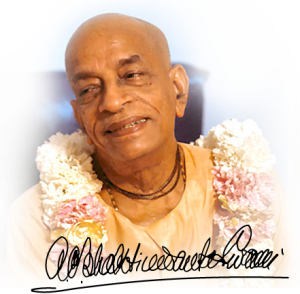


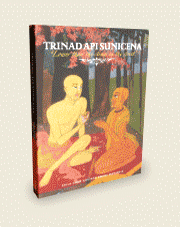
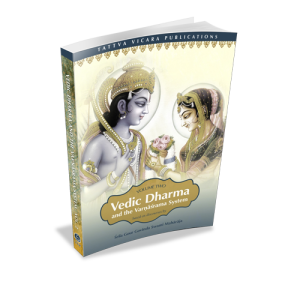
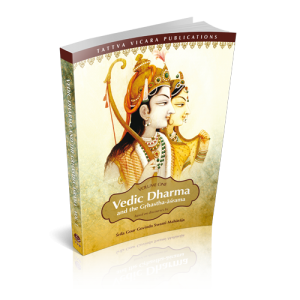
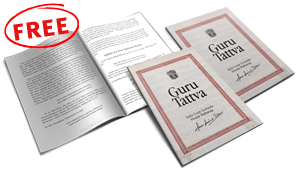
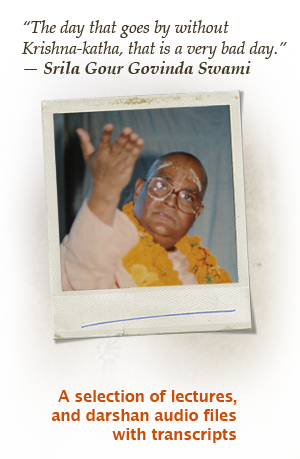
Thanks for posting. Enjoyed reading it.